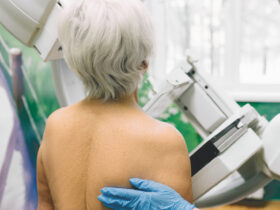By Robert “Bob” Dolata, MSPT
 Rotator cuff tears are among the most common causes of shoulder pain, affecting millions of people each year. Whether the result of aging, repetitive strain, or acute injury, these tears can significantly impair mobility and quality of life. Fortunately, physical therapy (PT) offers a powerful, non-invasive path to recovery—often eliminating the need for surgery and restoring strength, flexibility, and function to the shoulder.
Rotator cuff tears are among the most common causes of shoulder pain, affecting millions of people each year. Whether the result of aging, repetitive strain, or acute injury, these tears can significantly impair mobility and quality of life. Fortunately, physical therapy (PT) offers a powerful, non-invasive path to recovery—often eliminating the need for surgery and restoring strength, flexibility, and function to the shoulder.
Understanding Rotator Cuff Tears
The rotator cuff is a group of four muscles and tendons that stabilize the shoulder joint and enable a wide range of arm movements. A tear in this structure can be partial or complete, and symptoms typically include pain, weakness, and limited range of motion. Tears may occur gradually due to wear and tear, especially in individuals over 40, or suddenly from trauma such as lifting a heavy object or falling.
The Role of Physical Therapy
Physical therapy is often the first line of treatment for rotator cuff injuries, especially when the tear is not severe. PT focuses on restoring mobility, reducing pain, and strengthening the surrounding muscles to compensate for the damaged tissue. In fact, studies show that many patients who undergo physical therapy experience outcomes comparable to those who opt for surgery.
Initial Assessment and Personalized Plans
A physical therapist begins by evaluating the patient’s shoulder function, pain levels, and lifestyle needs. This assessment helps tailor a rehabilitation plan that may include:
• Range of motion exercises: These gentle movements aim to restore flexibility and prevent stiffness. Techniques like the pendulum swing or over-the-head stretches are commonly used early in recovery.
• Strengthening exercises: Once mobility improves, targeted exercises help rebuild muscle strength. resistance bands, light weights, and isometric holds are often introduced gradually.
• Posture correction: Poor posture can exacerbate shoulder pain. Therapists teach proper alignment and ergonomic adjustments to reduce strain.
• Pain management: Ice, heat, massage, joint mobilizations, and electrical stimulation may be used to alleviate discomfort and promote healing.
Benefits of Physical Therapy
The advantages of PT for rotator cuff tears are both immediate and long-term:
• Avoiding surgery: For many, PT alone is sufficient to restore function, especially in partial tears. This avoids the risks and recovery time associated with surgical intervention.
• Improved mobility: Regular sessions help patients regain the ability to perform daily tasks like dressing, reaching overhead, or lifting objects.
• Reduced pain: Strengthening and stretching reduce inflammation and pressure on the joint, easing discomfort.
• Preventing future injury: Therapists educate patients on safe movement patterns and exercises to protect the shoulder from further damage.
PT After Surgery
In cases where surgery is necessary—such as full-thickness tears or failed conservative treatment—physical therapy remains essential. Post-operative PT helps patients recover strength and range of motion while minimizing scar tissue and stiffness. The process is gradual, beginning with passive movements and progressing to active strengthening over several weeks or months.
Realistic Expectations and Commitment
Recovery through physical therapy requires patience and consistency. Most patients begin to see improvement within a few weeks, but full rehabilitation can take several months. Success depends on adherence to the prescribed exercises and open communication with the therapist about pain levels and progress.
Exercises You Can Try
Here are a few commonly recommended exercises for rotator cuff rehab:
• Pendulum swings: Lean forward and let your arm hang freely, gently swinging it in circles to loosen the joint.
• Wall crawls: Use your fingers to “walk” your arm up a wall, gradually increasing your reach.
• External rotations: With a resistance band, rotate your arm outward to strengthen the infraspinatus and teres minor muscles.
Always consult a healthcare provider before starting any exercise regimen, especially if you suspect a tear. Also, never perform an exercise if it is painful.
Conclusion
Physical therapy offers a safe, effective, and empowering approach to managing rotator cuff tears. Whether used as a standalone treatment or part of post-surgical recovery, PT helps patients regain control of their shoulder function and return to the activities they love. With expert guidance and a commitment to healing, the path to recovery is well within reach.
Robert Dolata II received his master’s degree in physical therapy from D’youville College in 1997. He has specialized primarily in geriatric physical therapy for 28 years and operates Deep Creek Physical Therapy which is a mobile physical therapy business serving the Port Charlotte, Punta Gorda, Venice, and North Port regions.
Deep Creek Physical Therapy
941-288-0012
www.deepcreekphysicaltherapy.com








